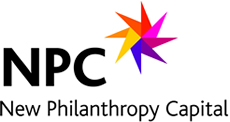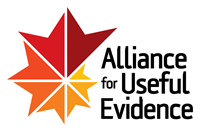Resources » Topic » Reporting
External Databases and ResourcesImpact ReportsVideosWorking Papers and Research
Books and Guides
Iridescent Ideas CIC and marketing social enterprise Poached Creative are demystifying social impact reporting with the publication of a white paper for social enterprises Why Impact?.
This paper explores some of the key issues around social impact reporting that were uncovered via a social media campaign in Spring 2014 and encourages social enterprises to get started (if they haven’t already). It covers:
- Reasons to measure and demonstrate social impact
- Common challenges
- What good social impact reporting looks like
- Resources and support available.
This document by The SIB Group and The Good Analyst is aimed at helping organisations that are looking to develop their own social impact measurement and reporting. It draws on a wide body of existing research to set out the fundamentals of measuring impact and working with results. It takes a non-prescriptive approach, as they believe that the first requirement of any impact measurement system is that it is of greatest use to you. Rather than telling you what you have to measure, the guidelines lay down an explicit framework as to how your ideas, your activities, and the things that matter most to you can be assembled into a coherent system for impact measurement and reporting.
These documents explain the relationship between Social Return on Investment (SROI) and 1) Social Accounting and Audit (SAA), 2) GIIRS Ratings & Analytics (“GIIRS” stands for the Global Impact Investing Ratings System) a comprehensive, comparable, and transparent system for assessing the social and environmental impact of companies and funds with a ratings and analytics approach analogous to Morningstar investment rankings, and 3) IRIS (Impact Reporting and Investment Standards) standardized performance indicators to help an organization understand its impact in a credible and comparable way.
The Good Analyst’s Guidelines for How to Measure and Report Social Impact are aimed at organisations looking to engage with social impact measurement. They provide a lucid walk-through of the key processes involved in creating an impact measurement system, and set out an outline for an impact report.
The stories charities and social enterprises tell about the difference they make can engage, inform and inspire stakeholders. Clearly communicating the impact of your work is important. This document, developed for the sector, by the sector, offers a guide to help you think about how you should communicate your impact, and what you should communicate. This document sets out principles of good impact reporting, to help charities and social enterprises tell their own story about impact.
By using these principles to demonstrate their impact, charities and social enterprises can have a strong influence on how they are perceived. They can help to shift the prevailing focus away from concerns about administration costs or chief executives’ salaries, and towards what really matters: the difference they make in people’s lives.
Network of Networks for Impact Evaluation (NONIE) is was formed to promote quality impact evaluation. NONIE fosters a program of impact evaluation activities based on a common understanding of the meaning of impact evaluation and approaches to conducting impact evaluation. By sharing methodological approaches and promoting learning by doing on
impact evaluations, NONIE aims to promote the use of this more specific approach by its members within their larger portfolio of evaluations. This guide from the World Bank by Frans Leeuw, Maastricht University, and Jos Vaessen, Maastricht University and University of Antwerp, was developed to support this focus.
External Databases and Resources
Charting Impact is a common framework from Independent Sector that allows staff, boards, stakeholders, donors, volunteers, and others to work together, learn from each other and serve the community better. It complements planning, evaluation, and assessment that organizations already undertake, and can be used by nonprofits and foundations of all sizes and missions.
The GRI Sustainability Reporting Guidelines offer Reporting Principles, Standard Disclosures and an Implementation Manual for the preparation of sustainability reports by organisations, regardless of their size, sector or location. The Guidelines also offer an international reference for all those interested in the disclosure of governance approach and of the environmental, social and economic performance and impacts of organisations. The Guidelines are useful in the preparation of any type of document which requires such disclosure.
Impact Reports
Making their lives better: now, tomorrow and every day is Action for Children’s Impact Report 2014. This report draws on a wide range of evidence, using both quantitative and qualitative data and includes findings from independent evaluations, a variety of measurement tools and services funded through social investment.
Videos
This webinar, from Charity Navigator, introduces their rating dimension. Called Results Reporting, the new metrics specifically examine how well charities report on their results. In the following recording of the webinar, experts explain why Charity Navigator developed Results Reporting metrics, introduce the new methodology and explain the process for implementation.
Working Papers and Research
This paper authored by Emma Tomkinson, is a selection of stories demonstrating the difference performance management systems make for social programs. It captures the attitudes and approaches of people who have figured out how to make data work for their organisations.
The SIAA Challenge Report 2014 by Kate Ruff provides an overview of an international competition between impact analysts who were given the same real data from the same real charity and asked to create a comprehensive, concise and compelling assessment of the charity’s impact.
CFG has an Impact Reporting Steering Group chaired by Paul Breckell, Managing Director of Corporate Resources at RNID:Action on Hearing Loss. This group feeds into the development of CFG member services and policy work around impact reporting.
With an increased emphasis on transparency and accountability, demonstration of social value and payment by results, being able to look meaningfully at and communicate the overall impact of your organisation is becoming more and more important.
In February 2011 the summary report, by Paul Breckell, Kate Harrison and Nicola Robert, Impact Reporting in the UK Charity Sector was published jointly by CFG and Cass Business School. The report was the result of a collaborative piece of research into the current state of impact reporting in the UK charity sector.
Many charities are very good at telling people about what they do—their outputs. But often, they struggle to translate this into what their work is actually achieving. How have their activities led to tangible changes in the lives of those they seek to help? NPC’s report by Eibhlin Ni Ogain, Jane Thomas, Mathilde Williams, Sarah Hedley, Sarah Keen and Tris Lumley looks at how charities in the UK talk about impact, and provides advice on good impact reporting.
The report details NPC’s analysis of the annual reports, annual reviews, impact reports and websites of 20 of the top 100 UK fundraising charities, highlighting examples of good practice, and offer advice for charities wishing to take the report’s findings on board, and take practical steps towards communicating what matters, in the most effective way possible.





